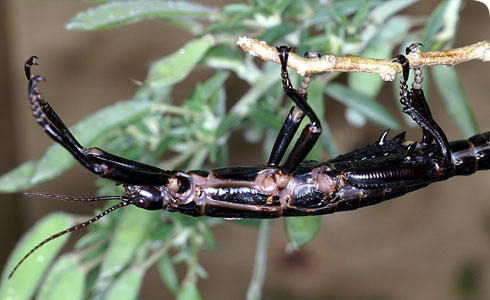Conservation
This species was originally thought to be confined to Lord Howe Island.
In 1918 the cargo ship SS Makambo ran aground off the coast of the island. Black rats (Rattus rattus) were washed ashore with the cargo and quickly began to reduce the numbers of Lord Howe Island stick insects by predation. By 1935 the species was considered extinct.
Reports of fresh remains of the species from a small rocky outcrop, Ball's Pyramid, 16km south of Lord Howe Island in the 1960s gave the first indication that a small population may have survived extinction on the island.
In the early 2000s several research expeditions were undertaken on the island, resulting in a pair of the insects being given to Melbourne Zoo in February 2003. The first captive born individual hatched in September 2003 and since then the captive population has thrived.
There are plans to repopulate Lord Howe Island from captive reared insects, but this first requires the eradication of the non-native rats. Plans are underway for an aerial eradication programme for the benefit of the stick insect and other species threatened by their presence.
The species is listed by the IUCN as being 'critically endangered'.
